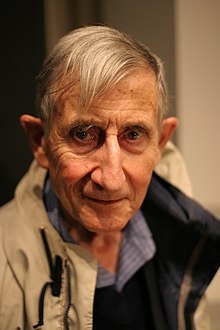
Helios is a design for a spacecraft propulsion system such that small (0.1 kiloton) nuclear bombs would be detonated in a chamber roughly 30 feet (9.1 m) in diameter. Water would be injected into the chamber, super-heated by the explosion and expelled for thrust. It was a precursor concept to the Orion project. Like Orion, it would have achieved constant acceleration through rapid "pulsed" operation.
This design would have yielded a specific impulse of about 1150 seconds (compared to a modern chemical rocket's 450 seconds). However, a number of technical problems existed, most prominently how to keep the combustion chamber from exploding from the great pressures of the atomic detonations.
The Helios propulsion system was originally conceived by Freeman Dyson.
See also
- Operation Plumbbob (1957), nuclear fission explosion test with steel plate experiment for Pascal-B
References
- Hadley, J.W.; Stubbs, T.F.; Janssen, M.A.; Simons, L.A. (2 June 1965). Helios pulsed nuclear propulsion concept (Technical report). doi:10.2172/6761138. OSTI 6761138. Archived from the original on 12 April 2022.
Further reading
- George Dyson (2003). Project Orion: The True Story of the Atomic Spaceship. Henry Holt and Company. ISBN 978-0-8050-7284-6.
This spacecraft or satellite related article is a stub. You can help Misplaced Pages by expanding it. |